Open to pedestrians and cyclists, the hybrid mass-timber structure spans roughly 130 feet over the Eyach River at an oblique angle and is defined by two curved glulam girders affixed to a steel understructure. These load-bearing beams rise above the fiber-reinforced plastic deck, forming a U-shaped “trough” with railing-height parapets on both sides.
As noted by IB-Miebach, timber trough bridges are particularly cost-effective to manufacture and maintain as they are tectonically simple, require little maintenance, and can be largely prefabricated off-site. They also offer an environmentally friendly alternative to bridges constructed with significantly greater quantities of high-emissions materials like steel or concrete.
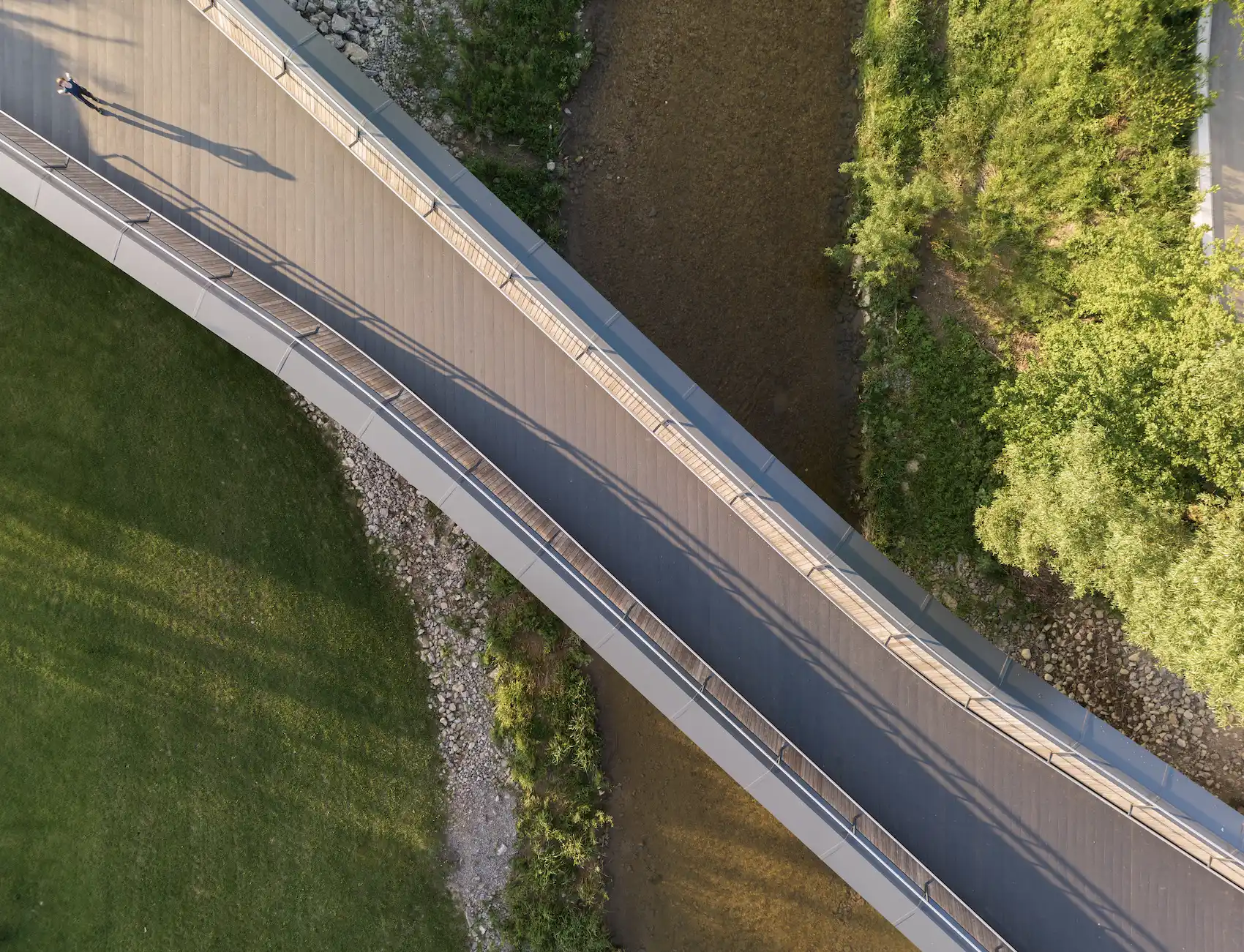
The 130-foot-long hybrid timber and steel structure spans acros the Eyach river at an angle. Photo © Simon Kennedy
“Balingen Footbridge demonstrates not just the aesthetic and structural potential of timber in place of steel in bridge-building, but the carbon that can be sequestered,” elaborated Ezra Groskin, director at Moxon, in a statement. “Through offsetting the concrete going into the abutments, timber allows you to create a more sustainable piece of infrastructure, that, with the correct maintenance, can last as long as any steel structure.”
The structure’s flared, fully accessible entrances tie smoothly into Balingen’s existing cycle and footpath networks. This organic fit is reflected in the project’s dynamic form—its main girders, which are rotationally symmetrical, tilt outward 22.5 degrees. The bridge’s inner walls are clad in native timber slats and feature handrails with integrated lighting.
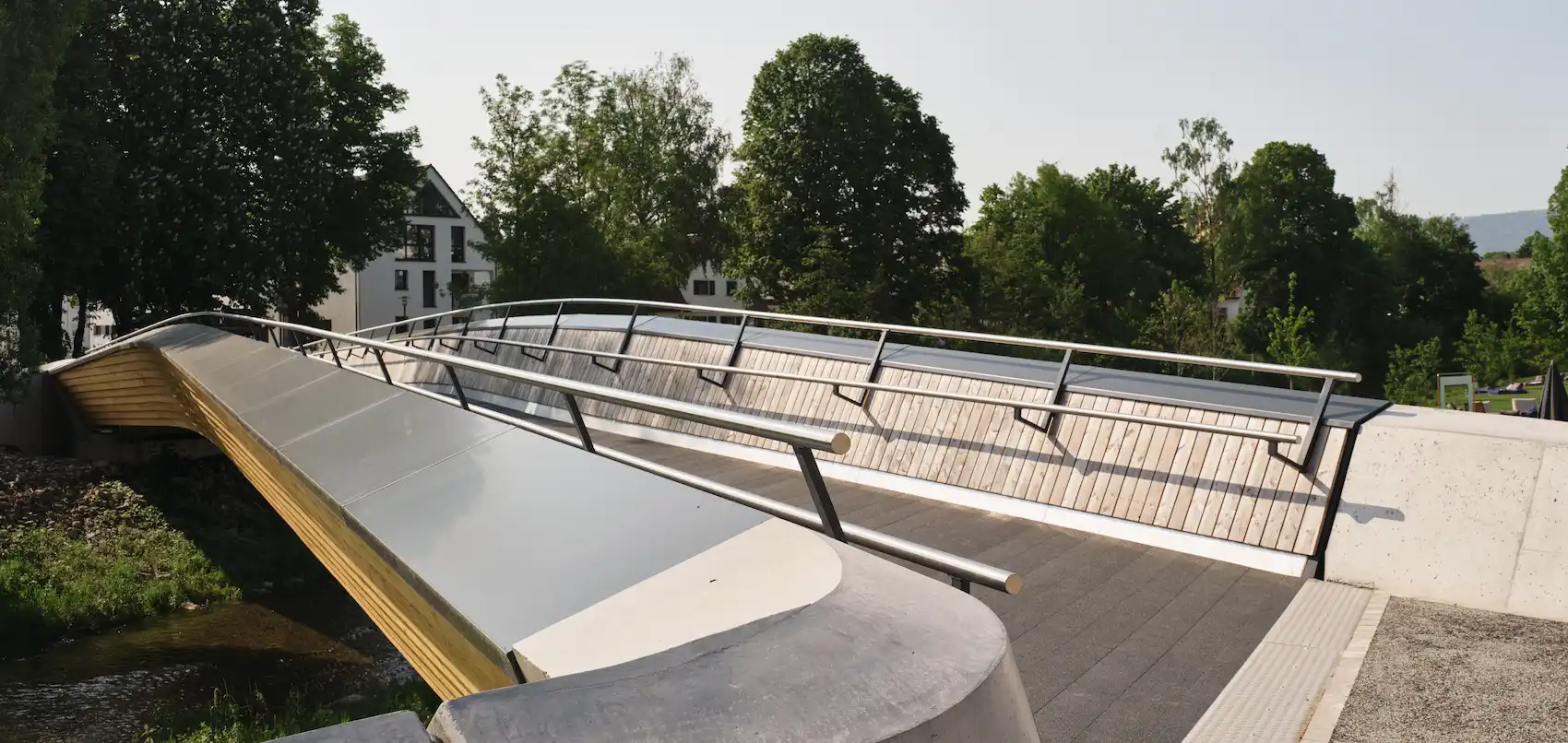
1
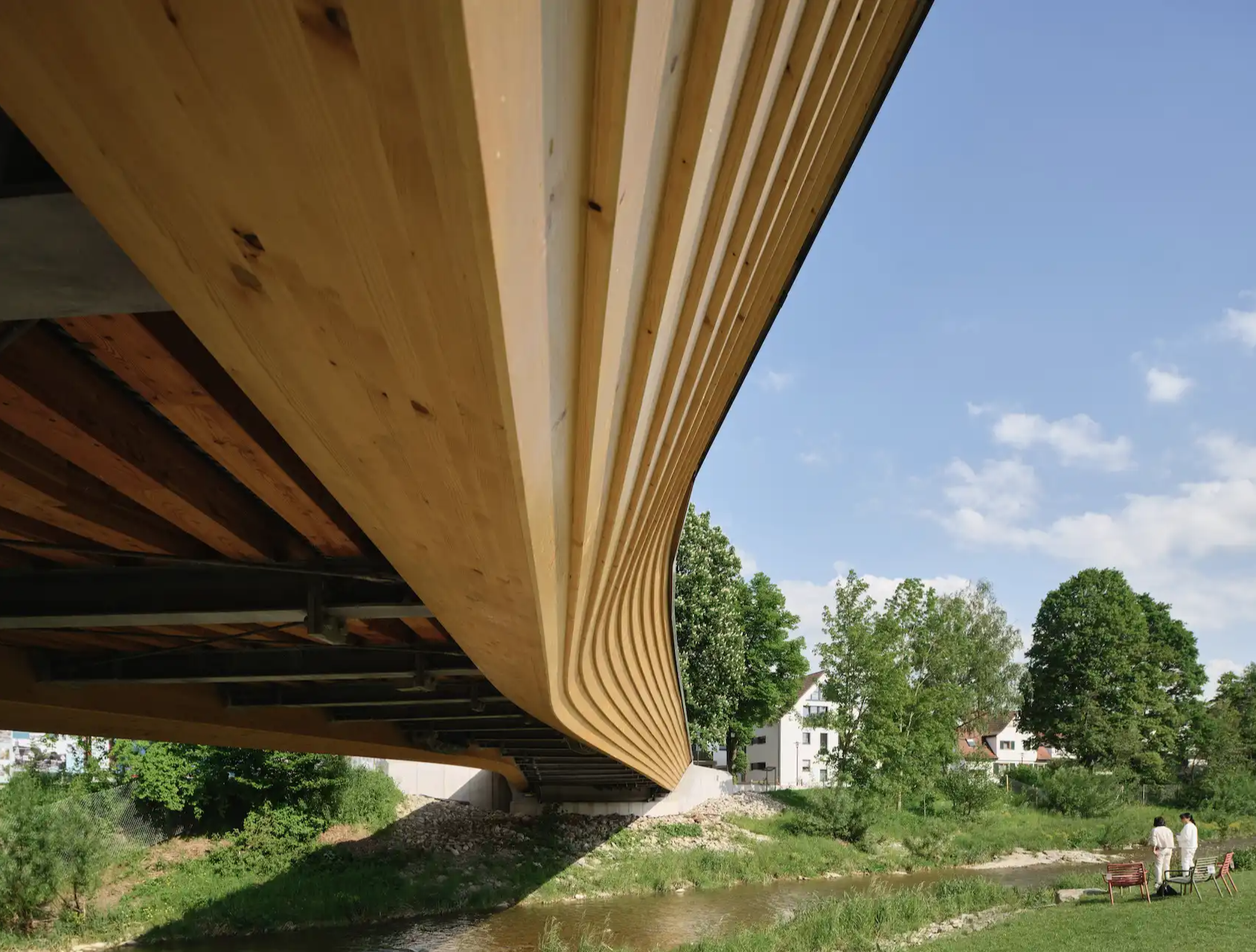
2
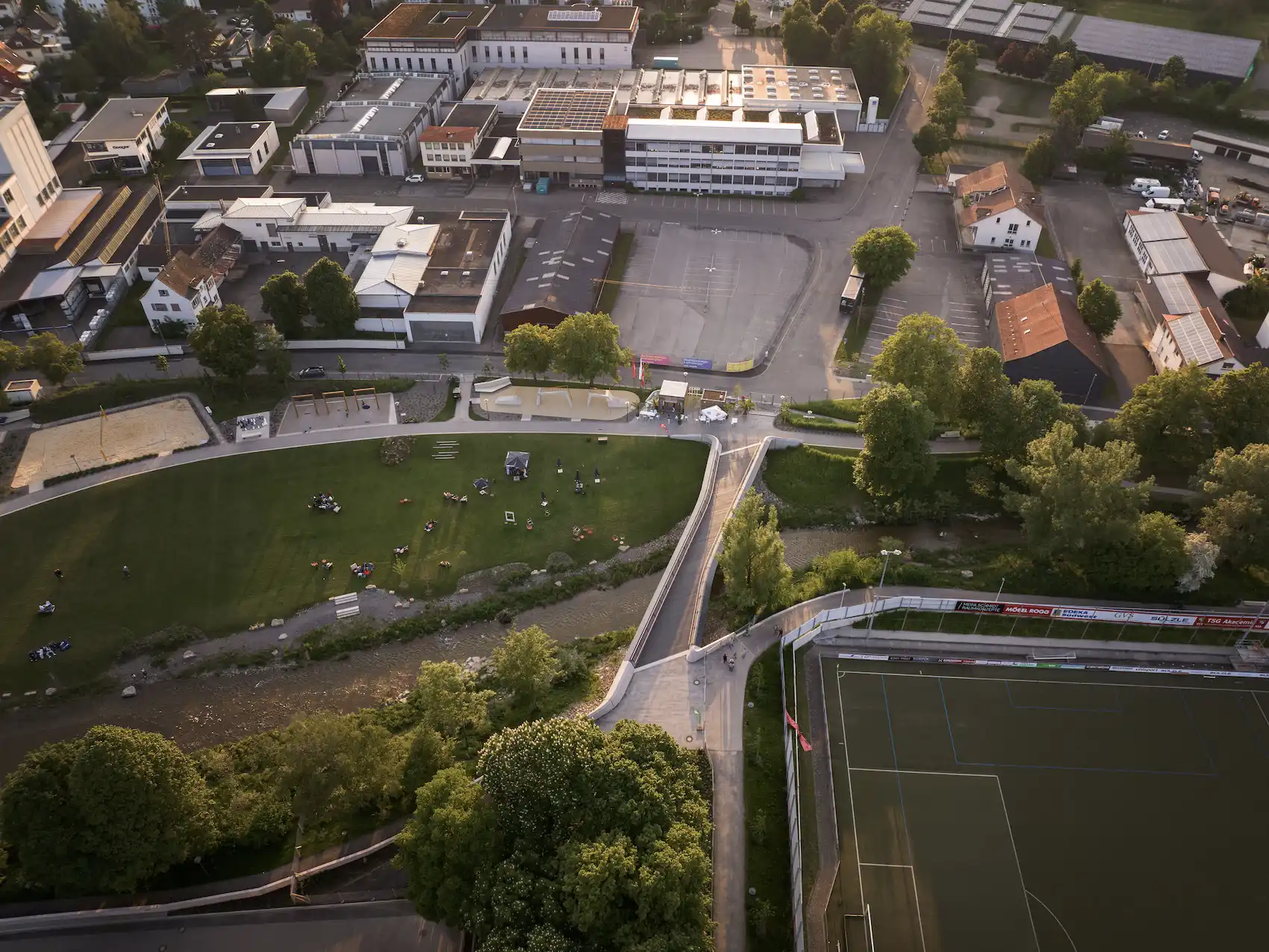
3
The trough-style bridge is linked up to the town's existing walking and cycling paths (1); detail view of the glulam girders (2); aerial view of the larger site, which includes new public green space along the riverfront. Photos © Simon Kennedy
Groskin told RECORD that the bridge’s “modest” aesthetic authentically expresses its structurally optimized, low-impact design. “It is hard to justify anything that is not structural, efficient, or honest,” he said.
“The big challenge in this project was working within the structural limitations that such a pared-back, elegant aesthetic can impose,” added Frank Miebach, director at IB-Miebach, who hopes the project might herald a paradigm shift. “This project shows that we can interpret wood in a contemporary way for bridges.”
Moxon Architects and IB-Miebach won the Balingen bridge project in a 2019 invited competition to replace a smaller existing bridge over the Eyach, a major river in the southwest German state of Baden-Württemberg, which passes through the town. Although these practices have collaborated for several competitions, the Balingen design is the first to be realize
Whereas the old bridge intensified regular spring flooding by forcing the river to narrow as it passed underneath, Groskin states that the new connection has twice the span, allowing the city to substantially widen the river at that location in anticipation of a 100-year flood event, the magnitude of which has a one percent chance of occurring each year.
The project’s trough design elevates the load-bearing girders to account for these levels while simultaneously keeping the deck low enough that it is accessible without requiring additional material. Groskin explains that “when you have a bridge in a flood condition where you want the foot path as close to the water as you can get it, you often put the structure above the path rather than below it. If you put the structure below it, you need more ramps to get onto the deck.”
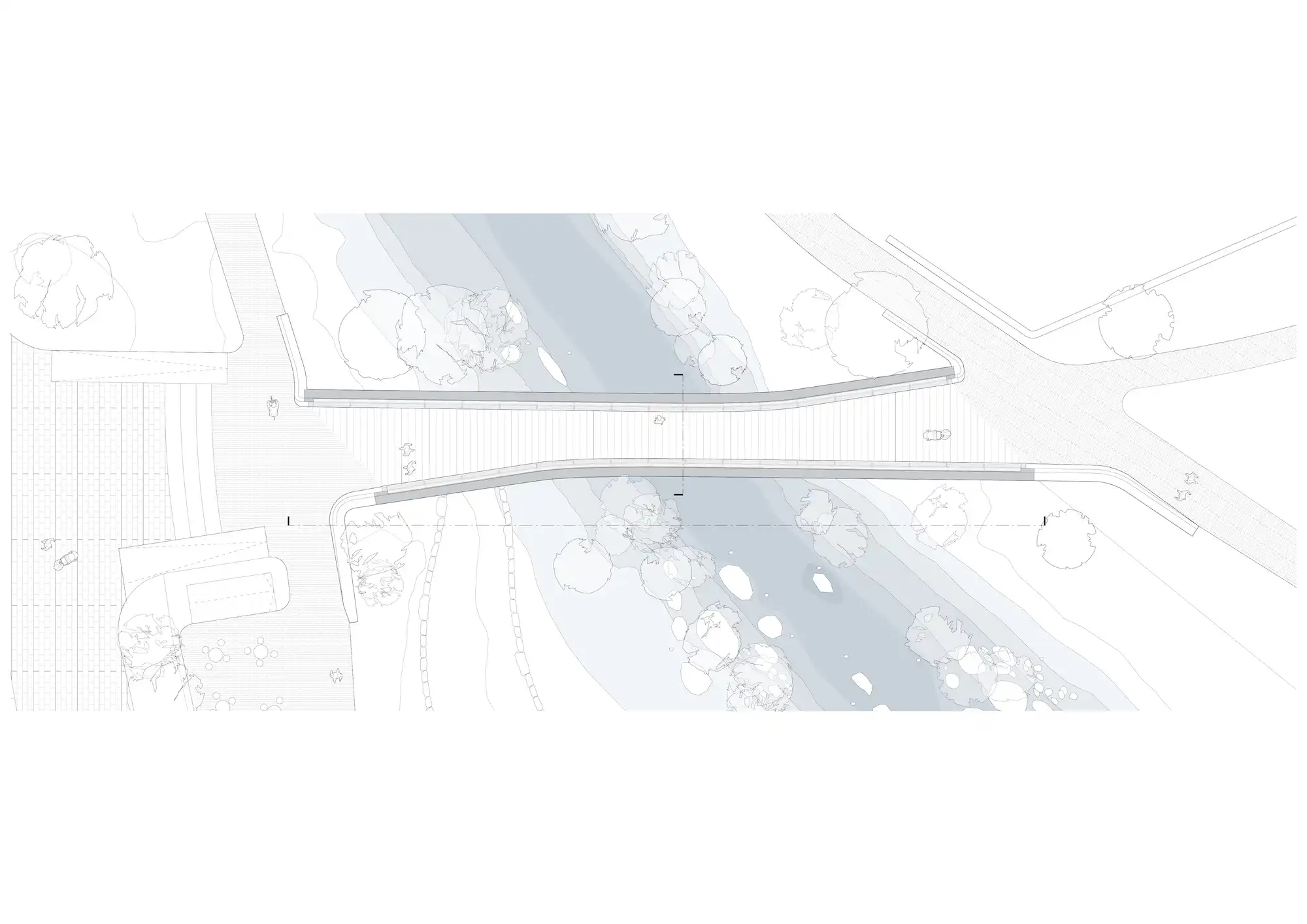
4
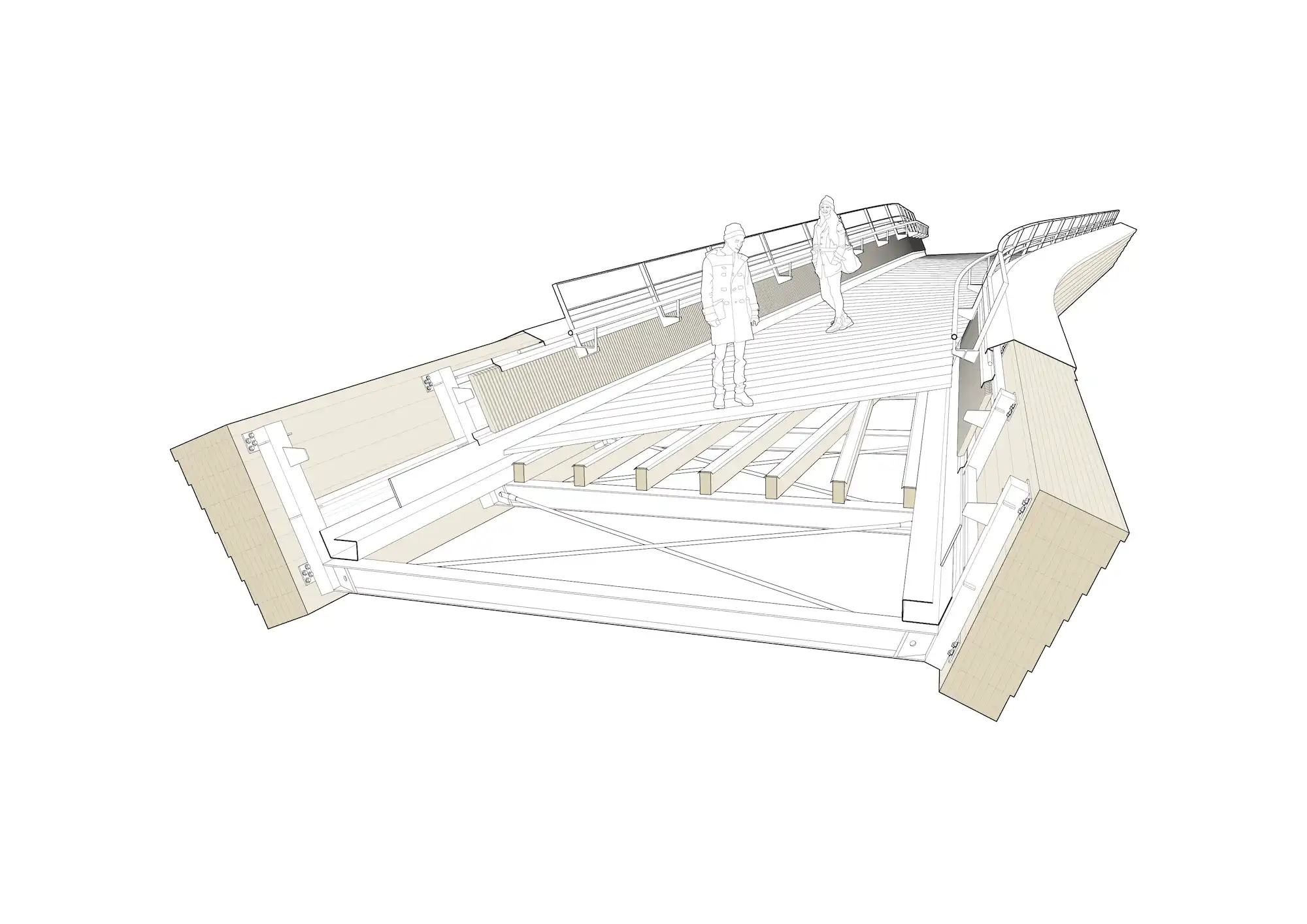
5
Site plan (4) and 3D section (5) drawings. Images courtesy Moxon Architects
The crossing debuted in May as one focal point in a larger 35-acre redevelopment effort led by Munich-based landscape architecture and planning firm lohrer.hochrein ahead of the 2023 Baden-Württemberg Garden Show in Balingen.The master plan reactivates the banks of the Eyach and Steinach Rivers while integrating the city’s historic center, green spaces, and the annual garden show’s various venues into a conceptual “necklace” that improves the town’s image and accessibility. According to Moxon, this bridge is expected to stimulate future “responsible regeneration” along the rivers.
“I think it’s inevitable,” Groskin suggested, regarding the possibility that wood will become the definitive material standard for bridges. “It is happening, just slowly, and I think that there will be a tipping point when people become comfortable with timber bridges and they start popping up more often.”
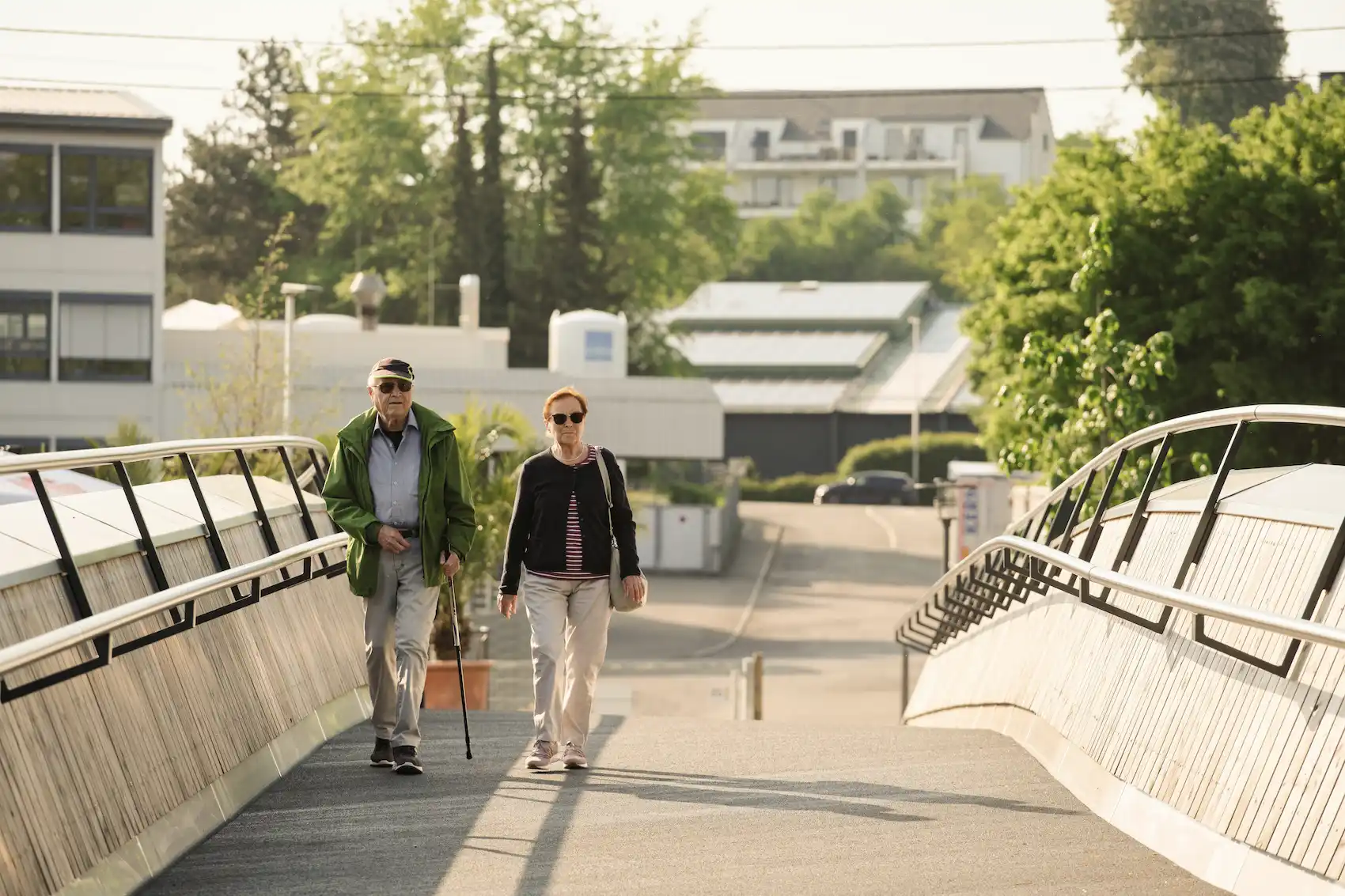
Photo © Simon Kennedy
Pedestrian bridge design is not new territory for Moxon, who previously designed two structures over the Regent’s Canal for the King’s Cross redevelopment (2017 and 2021, respectively); the Greenwich Reach Swing Bridge (2015), and a footbridge along the Thames Path below Chiswick’s existing Barnes Bridge—all located in London. IB-Miebach’s extensive timber bridge portfolio includes the Aggerbogen cable-stayed bridge in its homebase of Lohmar, near Cologne (2013); a cycle and pedestrian bridge in Paris (2023), and an upcoming timber-concrete hybrid bridge near Manching in Bavaria.
“We are excited to bring the experience and knowledge gained through this European collaboration back to the U.K., where we are optimistic it can inform our approach to designing both bridges and buildings,” said Groskin.





Post a comment to this article
Report Abusive Comment